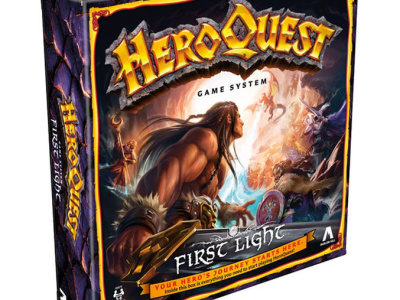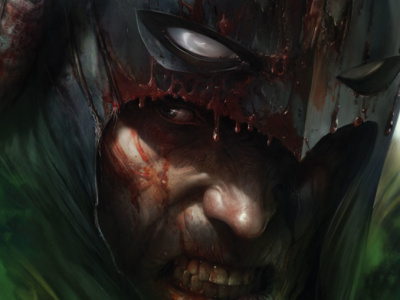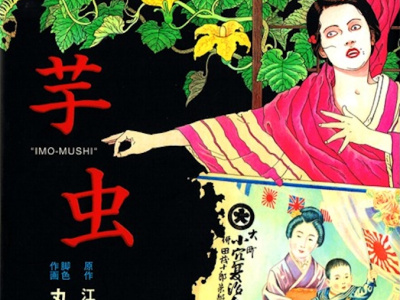
While we were in Korea for the Bicof comic convention and conference a few weeks back (see “Bicof Showcases Manhwa,” “Bicof 2011 Photos, Part 1,” and “Bicof 2011 Photos, Part 2”), we interviewed Yang Jae-hyun, the artist of The Ruler of the Land. The Ruler of the Land was licensed for the U.S. by ADV Manga, which published three volumes here.
In this far-ranging conversation (which was conducted in Korean via a translator), we discussed the Korean manhwa market and how it’s changing, especially the trend toward Web delivery of comics; Yang’s influences; and The Ruler of the Land, his long-running work.
For our readers that aren’t familiar with the Korean manhwa market, how would you describe the current market, especially for your work? Which of your stories are most popular and who are your readers in terms of gender and age?
My most popular work is The Ruler of the Land, which I began in 1994; it’s been around for more than 17 years. The main group of readers in terms of age begins as early as age 15 and goes all the way up to the late 40s. Women actually account for around 40% of our total readership.
Where is your work published? Is it on the Web, in books or in magazines?
My work can be found online. It also used to be published in the magazine Young Champ; but unfortunately it went out of business a year ago because the offline market in Korea has changed. Now there are more comics on the Web.
Is The Ruler of the Land continuing or is the story complete?
The story is continuing.
After it’s published on the Web is it then collected into books?
Yes, that’s right. The works are also published in book form.
How do you reach the most people, on the Web or by publishing the stories in books?
The number of readers who buy the books has changed a lot, but as far as each volume, the total amount is about 40,000 books. As far as online readers, the books are viewed online a lot here in Korea, but there are also many illegitimate versions out there on the Internet, so it is very hard to calculate exactly how many readers are viewing the books on the Web.
Which kind of readership is more important to you in terms of revenue, the Web or the books?
Actually, the main revenue has been generated from movies and online games. The offline sales have been going down.
Why do you think offline revenue have been declining?
One reason is the industry structure, the way Korea distributes comics. At this moment the young generation thinks they should enjoy online comics for free. It has become commonplace and they don’t feel any guilt in enjoying comics for free. It’s convenient to enjoy comics on the Web instead of readers going to the physical stores. The number of physical stores has decreased. There are so few stores, like Kyopo, which dominates the publishing sector here in Korea, that it is very difficult to get books in person. This is why people are just searching for the comics online: it’s convenient and it’s free.
You mentioned earlier there are illegitimate ways to get your work on the web, but are there also legal ways to get the works on the Web?
Of course there are legal ways to enjoy comics on the Web, but at this moment here in Korea, the understanding about digital rights to comics is not realistic among the readers. If a company researches the number of how many people downloaded comics, they think, ‘Oh, we can generate some profits from this work.’ They think they can distribute digital rights. But, we need to raise our understanding of digital rights to comics, and we need to build some sites where readers can pay a reasonable price and enjoy the comics online.
Many people have access to the portal sites, Daum.net, Naver.com, and Nate.com, where they can enjoy comics on the Web for free. These portal sites are trying to find a good way to have comics as a paid service. So we are expecting these portal sites to act like a conventional physical publisher and get a specific price from readers.
When they are available on the Web now, since people don’t pay, are the sites supported by advertising?
The Korean artists who upload their works to the Websites are paid monthly. But if the artists try to publish their work in a book, the artist has to contact the publisher in person.
The paid comics have a different system, so if paid comics have a lot of readers, the artists get more pay from the purchase site.
Paid comics have a double structure. Paid comics have a publisher and the portal site. The publisher pays a specific amount to the portal site so that is why they calculate how many readers read these books.
Are the comics also available for devices like smartphones or iPads?
Yes, they are about to be able to be accessed by e-books or applications.
And is this an important source of revenue?
At this moment it is not big, but I am expecting that e-books and applications will be a big way to bring comics to readers in the future. Also the e-book and smart phone applications could be a good way to get rid of illegal downloads.
What are your influences in creating your comics? How much of your stories come from Korean traditions and how much of your influence comes from other sources such as Japanese, American or European comics?
It is hard to say what is Korean culture; there are a lot of different cultures among artists here in Korea. I actually got my material for The Ruler of the Land from China. But the way to express the story is from Japan. And the backgrounds, and the way the characters act is from Korea.
The whole of Asian culture is represented in my work. My works are usually heroic stories and most people may think, “If it’s a heroic story it is from China.” But Chinese readers may think, “It’s a very exotic story, it’s not from China so it must be from Korea.” So there are lots of Asian cultures in The Ruler of the Land.
So your sources are from a variety of Asian influences. How do you think these stories appeal to readers in other parts of the world such as Europe or America?
To introduce and attract the European and American readers we need an “issue maker.” A long time ago there was a movie Crouching Tiger, Hidden Dragon. After that movie was a big success in the American market, a lot of American filmmakers tried to find ways to create action movies with Asian atmosphere. I think to get successful results from European and American markets we need that same kind of “issue maker” in the comic industry.
Why do you think that The Ruler of the Land has been so popular over such a long period of time?
I think it has been popular because The Ruler of the Land is easy to follow. When it comes to heroic stories in comics, many people think that they’re very difficult to understand or to enjoy. Heroic stories often have maniac fans that study the comic books, but this book is very easy to understand. Usually the heroic stories are for males; but for this work, whether it’s women, children, old people, it doesn’t matter. It’s very easy for everyone to understand this work. That’s one of the big reasons why this work is very popular.
You mentioned that The Ruler of the Land has been used to make online games and we have heard there is a movie in development. How involved are you in the use of the property in other media?
The movie based on The Ruler of the Land is only in the scenario stage, so the story is just being written right now. Regarding the game, I was involved in the whole scenario, and supervised the whole scenario and the images, and the entire production process.
The game based on this work has been available on the website N-game – which has 60% of the profits from my work.
Lastly, is there anything you would like to say to our readers -- these are mainly retailers, distributors and publishers of comics.
I think that your attention is focused on the current situation of the comic industry, but I would like to give you an answer focused on the future -- not only for the U.S., but for the whole world.
The way that comics are chosen to be imported has been solely based on the tastes of importers and agents. They don’t consider the readers’ tastes. In the future they should gather opinions from the readers, because the readers have a right to choose what comics should be imported. Especially these days when smart devices like the iPad, or the Galaxy tablet and other devices have been spreading across the world. I am expecting a new distribution structure where the readers read comics on the Web, or by using these devices, in real time, not through other retailers.







